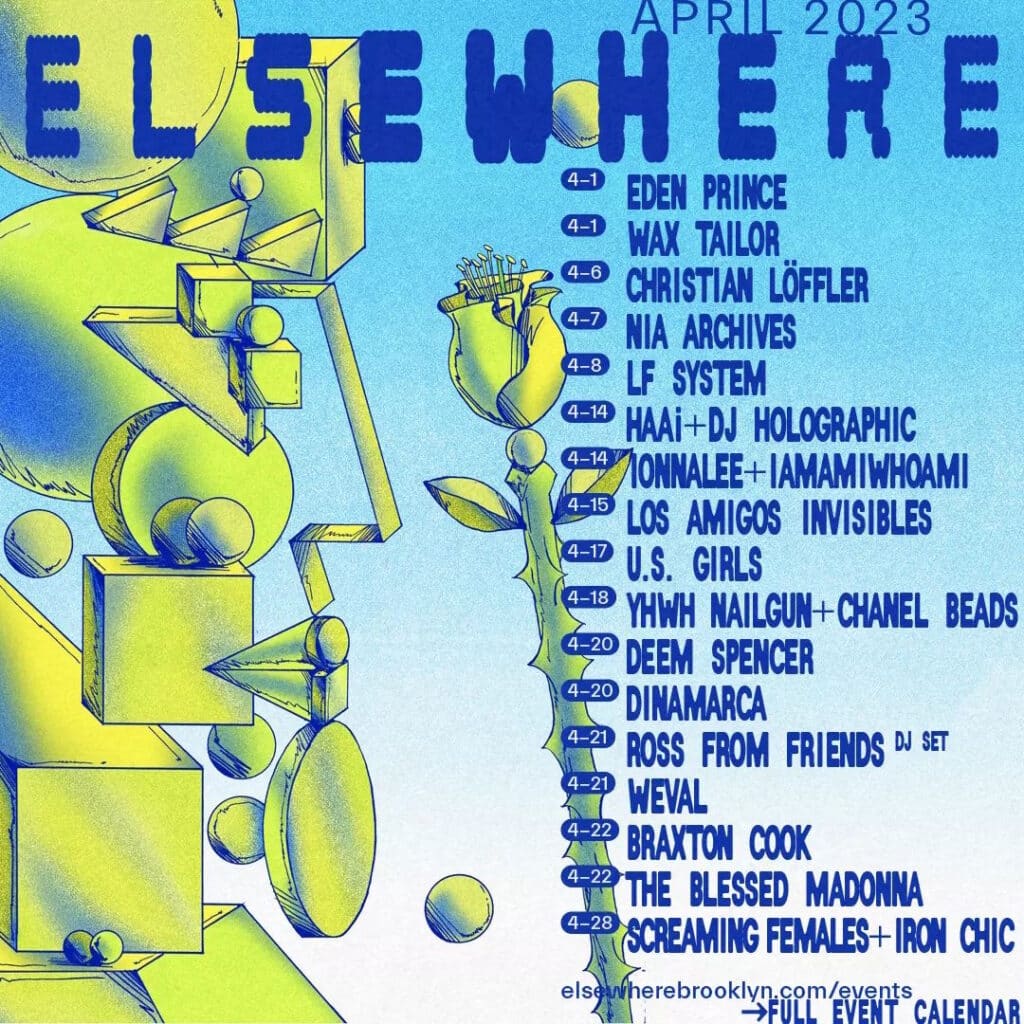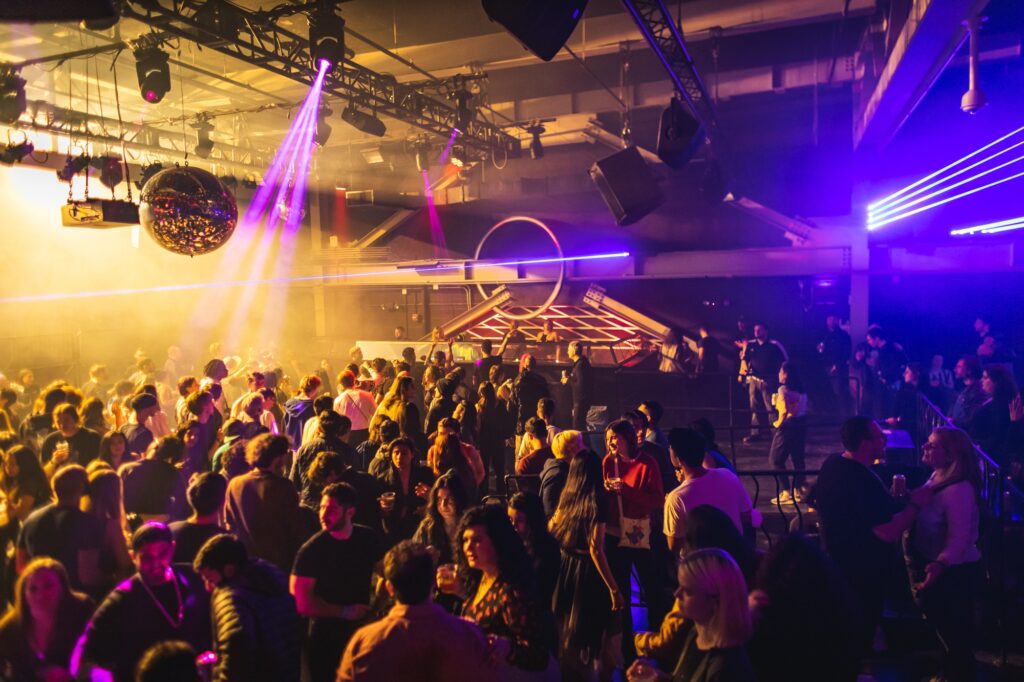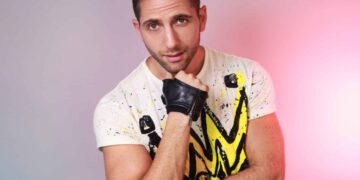Five years on, Elsewhere Brooklyn has seen it all and embraced changes, to become a go-to club for music, arts, and inclusivity.
When Elsewhere opened in 2017, Brooklyn was certainly on the rise, but the gritty neighborhood that Elsewhere calls home hadn’t yet fully established itself. Sure, there was House of Yes, and bustling activity into the wee hours along Wyckoff. But warehouse-style clubs had come and gone without cementing the area as a nightlife destination. Whether founder Jake Rosenthal and his Elsewhere partners were prescient or lucky doesn’t matter – Elsewhere has become an anchor to a part of Brooklyn nightlife that is now very well-established.
From the jump, Elsewhere was a unique space with three stages, multiple additional rooms, art installations, and a quiet loft space where partiers often go to pre-game and catch up with friends before a long night out. In fact, my introduction to Elsewhere was during an Anjunafamily meetup in the loft before heading to an entirely different club. While in the loft, I made a mental note to come back soon for a full card of nightlife entertainment, and I was not disappointed when I did. Discovering sets on the rooftop for the golden hour before wandering between two indoor stages was just the perfect experience.
Over the years, Elsewhere has evolved with changes in the scene, but more importantly is the ethos that never changed. That ethos includes a focus on community and diversity, a safer spaces culture seeking to expose patrons to side experiences they might not expect – such as immersive art installations or a wildly different show on the next stage. Staying true to these grounding principles has made Elsewhere the “go-to” spot it is today. Most recently, Elsewhere expanded on its community efforts with a unique membership program that encourages members to make this club their home. We spoke to Rosenthal about this ethos, and evolution of Elsewhere over the past five years.
Check out the April lineup and continue reading below for the complete interview!

Let’s go back to the beginning for a moment – what was the inspiration for Elsewhere? And as the planning took place, did the club you actually opened five years ago meet your initial expectations?
With Elsewhere, we set out to build a more progressive and uplifting nightlife culture. We wanted to create a space for a lot of different communities to discover new music, not just one very specific type of person. For us, the diversity of the communities that we have in New York is what makes the city so interesting. Elsewhere is meant to be a reflection of that. Core to our mission is serving that very broad set of communities that we’re lucky to have here. To do that, we have to involve a lot of different voices and create safe spaces for them to connect and have fun together. That’s what we really focus on – that’s the magic of Elsewhere.
We were ruminating on this shift towards inclusivity for a few years before Elsewhere opened in 2017. Amid all the realities of opening a club that ran us ragged for over three years – raising funds, dealing with contractors, construction woes – it felt like a marathon just to get to opening day. We’re super proud of what we set out to do then, especially when we look at what we’ve built now.
Tell me a little about opening day. How did it go?
I remember the music from opening day – BATTLES (experimental rock), Combo Chimbita (Latin pop/cumbia), Cakes Da Killa (rap), and many others. We opened with the idea that we could combine rock, DJs, rappers, and Latin all together in one night, with a bunch of art installations. We continue to mix styles on any given night.
When we opened, the venue was no more than half built. We’ve added so much to the space since, but on opening night, it was pretty spare. It got to a point in the construction process where we were running out of money and just needed to open this thing to the public. But I think that opening half built is very Elsewhere in spirit because our space changes as people come and go and impact it. Our goal has always been to create a very organic place that’s subject to change and always in flux.
So in many ways, it opened pretty much how we expected, in the sense that everything is a surprise all the time.

I was at the rooftop opening last year with some chill DJs for sunset and snacks. Then we were invited to check out the acts inside and there was a heavy metal band in one room. Many of us ravers in Kandi and glitter walked into this room of heavy metal fans and somehow it did feel organic and natural to be there.
I’ve been in New York for almost 20 years now. The influence of the internet has reduced the silos that music used to live in when I was a kid. As a result, there’s an open-mindedness and willingness to be exposed to a wider, very technicolor view of culture IRL. I think it’s a really beautiful thing.
Having a wider breadth of experience in music doesn’t mean you can’t love one type of music more than another. But to have that exposure, and to play in those spaces, and explore it, and meet the people who are interested in those things… this goes back to what we’re talking about. What’s fun about culture is being exposed to the unexpected and the dialogue you have when you’re surprised by something.
Coming out of Glasslands, our first venue, we had a lot of success with emerging music. In 2008, the culture was still a lot more siloed than it is now. We knew that we wanted to break those walls. Elsewhere ended up having so many rooms for this reason. We kept adding spaces because we realized it could be really unique this way. Compared to other venues in the city, we could actually get people together that didn’t intend to see each other.
Something I hear often, and it’s one of my favorite things, is how people wandered into another room that they didn’t expect to be in and they heard music that they’d never heard before – and stuck around to enjoy it! That’s also part of why we don’t really police the walkway between the rooms because we really want people to have that experience. You can come for something you wanted to come for, but then find something you didn’t know about. That aspect of discovery, crosstalk, exposure – that’s really core to what we do at Elsewhere.
And it’s working – in an early survey, most of our audience came either for live music or club music, not for both. Now in a recent survey, 66% of people come for both. I think that’s a testament to where the culture has come in the intervening years, but also us really trying to create spaces for people to get together and be exposed to all sorts of different music. It’s what we like, personally, and it just plays out with how the venue’s programmed. Serendipity is the core of culture. Otherwise, it’s just transactional, you know?
You’ve said that one thing never changed from the start, your mission: “to build a more progressive and uplifting nightlife culture through creative risk-taking and emerging music with community at the forefront.” What encouraged you to stick to this over the years? Were there ever moments that called this mission into question?
It’s a really interesting question. Building a sustainable business isn’t at odds with building a great community. I don’t think they’re mutually exclusive. But sometimes you have to make decisions that influence one at the exclusion of the other. Community building is hard. It’s harder than selling tickets. At the core of both is trying to understand the types of people who are coming to the venue and why.
Our belief is that nightlife and music culture is, at its core, a social activity. It’s about finding other like-minded people with whom you can enjoy life. That’s what music is about to me. When I see a music space that feels more like a facility than a social gathering place, that feels more transactional than communal. To me, it feels like it has lost its way a bit.
Everything we do at Elsewhere is through the lens of it being a social experience. We ran a missed connections campaign recently on our socials. We are running a Discord server where we’re getting people to connect with each other and plan meetups. Everything is so much more enjoyable when it’s a community experience, rather than a transactional one.

We recently covered the new membership program and, frankly, we’re wondering why other clubs don’t have more programs like this. Why do you think this will be successful and do you think we’ll see this from other venues as well?
We built a membership program aimed at fostering a progressive nightlife community; one that’s made up of open-minded, radical, culture-obsessed people. Now, more than ever, fans are looking for more affordable options to get out, feel a sense of community, and enjoy live music. Membership programs benefit any space that wants to build a community. I hope we see it from others but many don’t consider it because you can’t always put a dollar value on community. There usually isn’t a direct feedback signal that says it’s good for your business. You have to create some foundational commitment to it as an idea, and that often isn’t enough to be attractive to a certain type of space. The tools and technology for memberships can be expensive, and it takes time to nurture the community.
It’s also very vulnerable. I’m in our Discord chatting with our community quite literally 24/7. To allow thousands of people that are forming this community that kind of access makes us very vulnerable. I’ve definitely been asked uncomfortable questions and I’ve had to find a way to answer that is fair and transparent. There’s a high bar for accountability and transparency, and that’s a big difference from a place that is only there to make money.
Everyone I speak with agrees that it feels like one of the safer spaces in NYC, yet you don’t do things like post fliers or give a consent speech at the door. What’s your take on safer spaces?
I’ve been asked a few times and the simplest answer is that we put a lot of effort into training our staff. I don’t just mean training on policies and procedures. I’m talking about sensitivity training – learning about the different types of people that are coming to Elsewhere and how to interact with them. We have people of all different identities, sexual orientations, backgrounds, and beyond, that come to Elsewhere. We take this very seriously. We have to respect everyone for who they are and we need to understand as much as we can about all their different needs. Any place that doesn’t take that seriously can quickly feel unsafe, even if your intention wasn’t to create a gruff or unwelcoming space.
You can read someone a statement at the door but that doesn’t guarantee that you’re going to create a safe space. You need to have really well-established procedures for how you deal with every type of wacky confrontation or conflict situation that can arise inside a club.
I’ve seen thousands of uniquely distinct situations that each require their own nuances to de-escalate. The hard work is not in reading somebody a sentence at the door – the hard work is in making sure that everybody on your staff is working as a team to keep people genuinely safe in the space.

Personally, my favorite thing about Elsewhere is how welcome I feel every time I am there. The staff and the regulars are all so friendly and always ready to lend a hand. It’s less about the headliner and more about the people that interact with each other.
We put a lot of effort into that and it means the world to hear you say that. It’s the result of a lot of hard work and I’m proud it’s paying off.
Let’s wrap up with something a little fun. After a night out at the clubs anywhere in NYC, if you could immediately teleport anywhere else in the city, where would you go for that post-party bite to eat?
Popeyes :) Or, locally, Tina’s Place.








